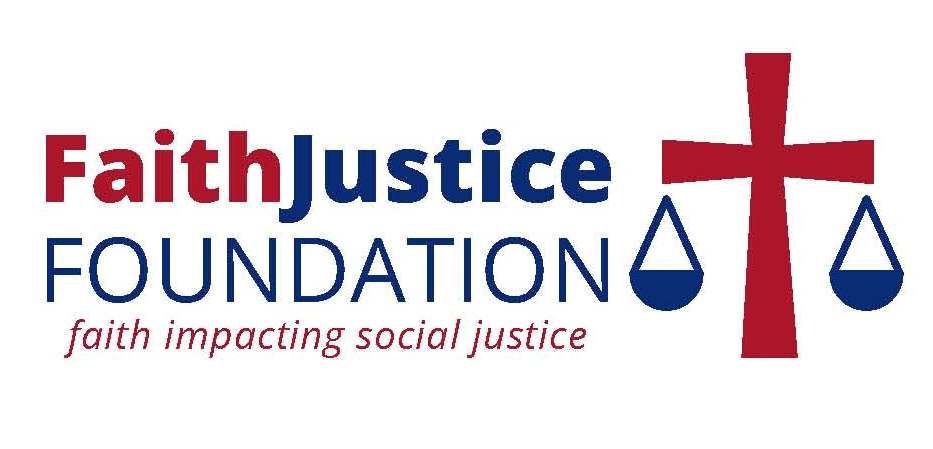
AREAS OF FOCUS
————————–
EDUCATION EQUALITY
The FaithJustice Vision
America has long been a world leader in primary and secondary education, as well as in college education. The rising level of high school education during the first half of the 20th century made a decisive impact on the decline of inequality and poverty in three decades after World War II. From 1960 to 2017, the number of Americans over age 25 or over who had graduated from high school rose from 41.1% to 90%. For blacks, the gain was even more dramatic during this period: from 23% to 87%.
Yet, not all students have benefited from these achievements. The racial and economic gaps in college graduation remain very high. Often low-income students do not get a college degree, have no technical skills, and even if they attend college, they end up with lots of debt. The root of this problem lies in American inequality and its impact on achievement in primary and secondary school. Low-income and minority students are often confined to high poverty neighborhoods and to schools with low funding and a low quality of teachers. Residential segregation by race and social class is a contributing cause. As a result of disparate achievement by social class, the educational system often perpetuates the gap between the rich and the poor in American society. Upward mobility in the US has declined over the years and those born in the 1980s are less likely than previous generations to exceed the income of their parents.
The FaithJustice vision is that people of faith will identify local and national solutions that address the roots of the problem to ensure that our educational system will benefit all students, all students regardless of their socioeconomic or home life situation. Faith communities need to continue to expand their educational vision past traditional pre-school and Sunday school classes, to improving education for all Americans.
The Biblical Witness+
Speak up for those who cannot speak for themselves, for the right of all who are destitute. Speak out, judge righteously, defend the rights of the poor and needy. (Proverbs 31:8-9)
Blessed are the poor in spirit for theirs in the kingdom of God. (Matthew 5:3)
Key Issues
Zip Code Education
Where you live and go to school in the U.S. impacts your chances at success in school and life. In most of the U.S., public schools are funded by local property taxes. This means that schools in high-income areas with high property values have more resources than schools in low-income areas. Nationally, school districts with high poverty rates spend 15.6% less per student than those with low poverty rates, and school districts with a large percent of black and Latino students received on average $1800 less per student than in districts which are less racially diverse. Research shows that children growing up in poverty are more likely to experience trauma. Because of the zip code link with resources, schools with the most studen\ts experiencing trauma have the least resources to effectively support such students. Zip codes are highly correlated with race, so inequality is highest for students of color, who have less access to quality teachers, guidance counselors, college readiness courses, and gifted and talented programs. As a result of these and other factors, 77% of students from families in the top two income groups will earn a college degree by age 24, compared to only 10% in the bottom income group. And the six-year graduation rate for blacks in four-year public colleges is 47.6%, and 57.4% for Hispanics, compared to 67.1% for whites and 70.3% for Asians.
Solutions: There are differing opinions on the best way to address this inequality and various approaches. Federal efforts to change the school financing model have largely failed. Some advocates have focused on expanding school choice for students and parents through charter schools and other alternatives, so that the local public school is not a parent’s only option. Others argue that a focus on alternative schools pulls resources away from public schools without necessarily creating better results. Some advocate that states should allocate more resources and money for districts that don’t have the tax base to raise the needed funds themselves.
How to Take Action:
- Advocate for creating equitable school systems with Stand for Children
_____________________________________________________________________________________
School-to-Prison Pipeline
Too many children are funneled from schools into the juvenile and criminal justice system. Instead of having access to the necessary counseling and support, children suffering from poverty, abuse, trauma, learning disabilities are often isolated and punished. Zero-tolerance policies and police officers in schools have led to the criminalization of infractions of school rules. This issue disproportionately affects students of color because of discriminatory application of discipline policies, in which black students receive harsher punishment for the same behaviors. Black students are more than two times as likely to be suspended as white students, 3.8 times more likely to receive at least one out-of-school suspension, and 2.3 times more likely to be referred to law enforcement or experience a school-related arrest. Disabled students are also at particular risk, being twice as likely as their non-disabled peers to be suspended.
Solutions: Many school districts across the country are actively working to shut down the school-to-prison pipeline. There are a number of different solutions to achieve this, including restricting what offenses and conduct gets referred to the police and courts and by ending zero tolerance programs. These actions work by severely limiting the interactions of the criminal justice systems with children. Another solution is schools shifting towards a restorative justice model and fostering relationships between students, teachers, and administrators so that conflict can be resolved through communication.
How to Take Action:
- Get involved with One Church One School to partner with a local school to help boost the academic achievement and personal development of the students

